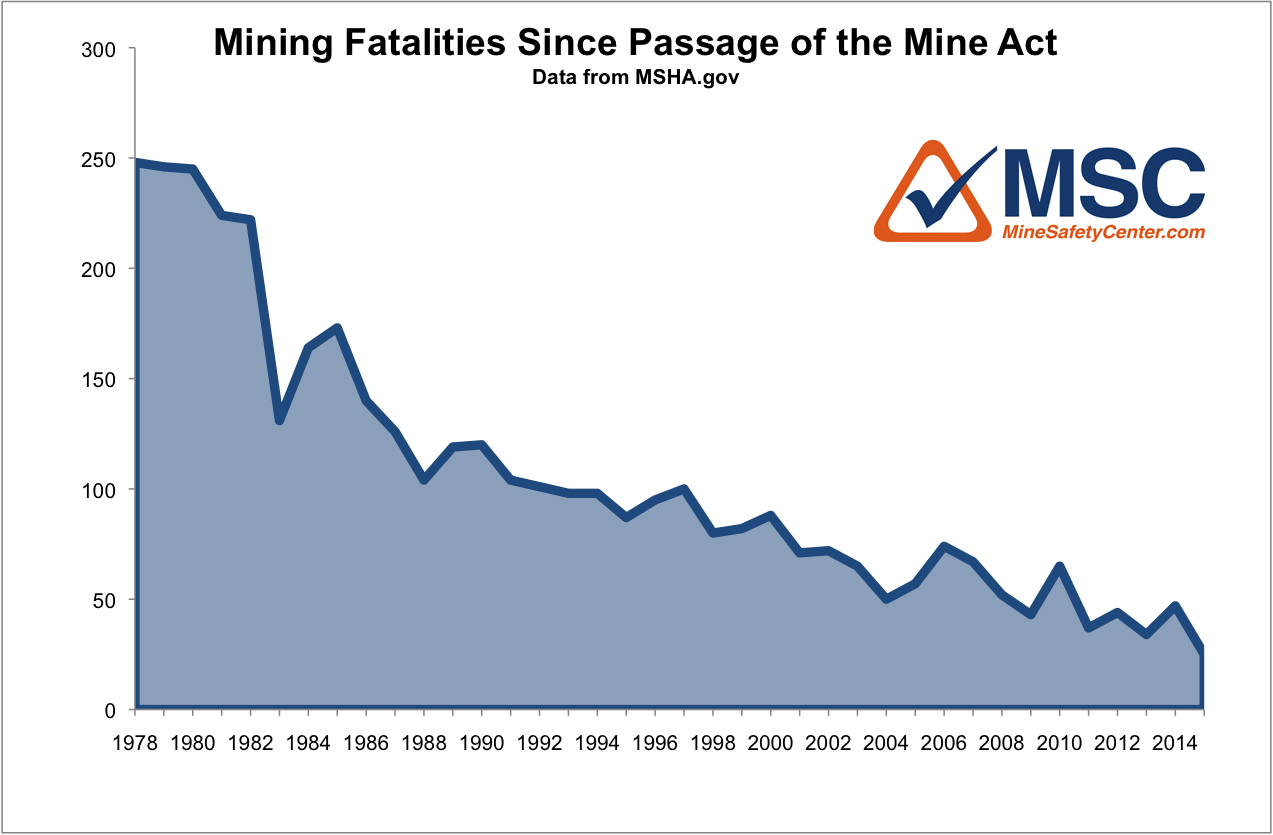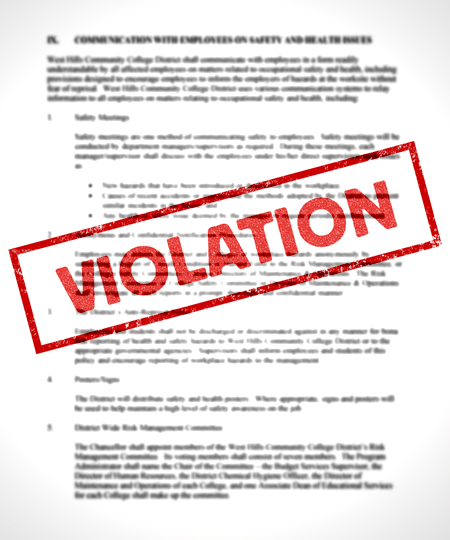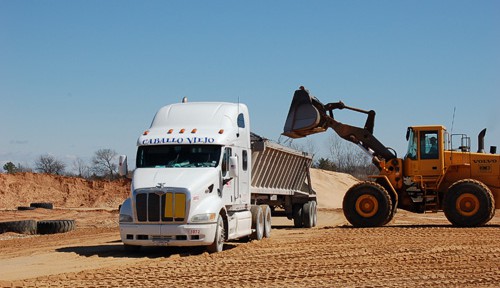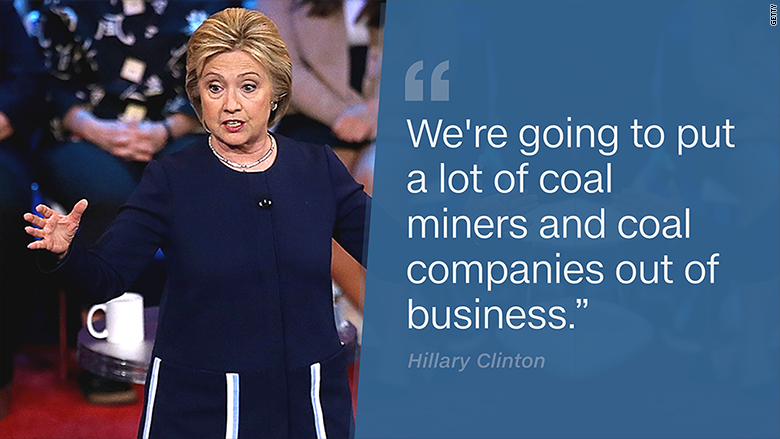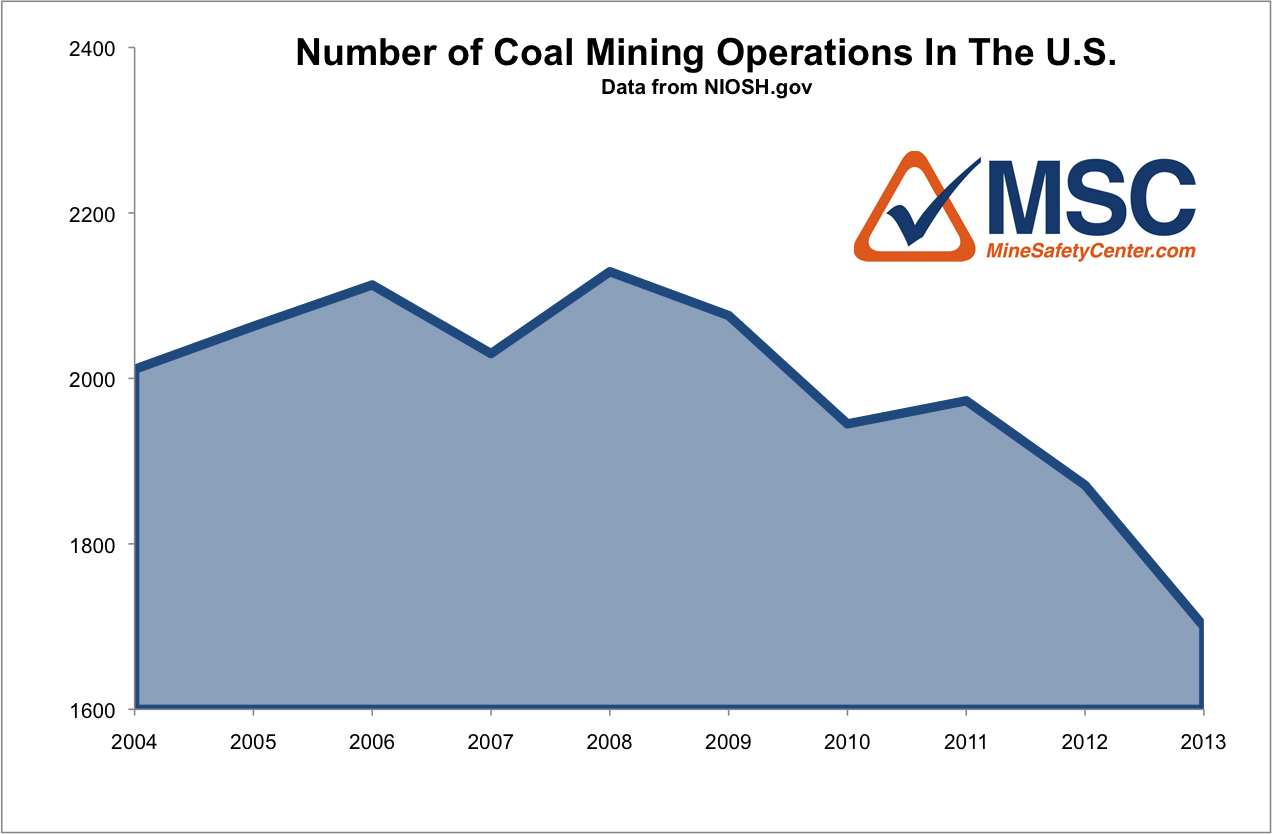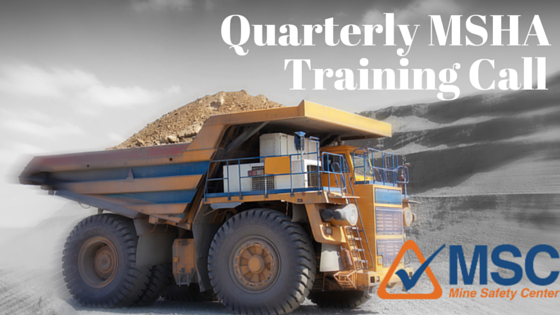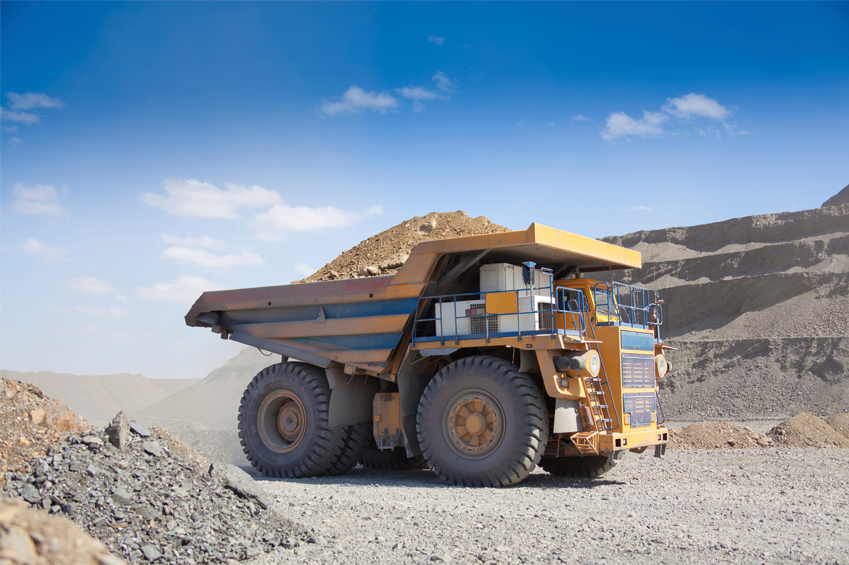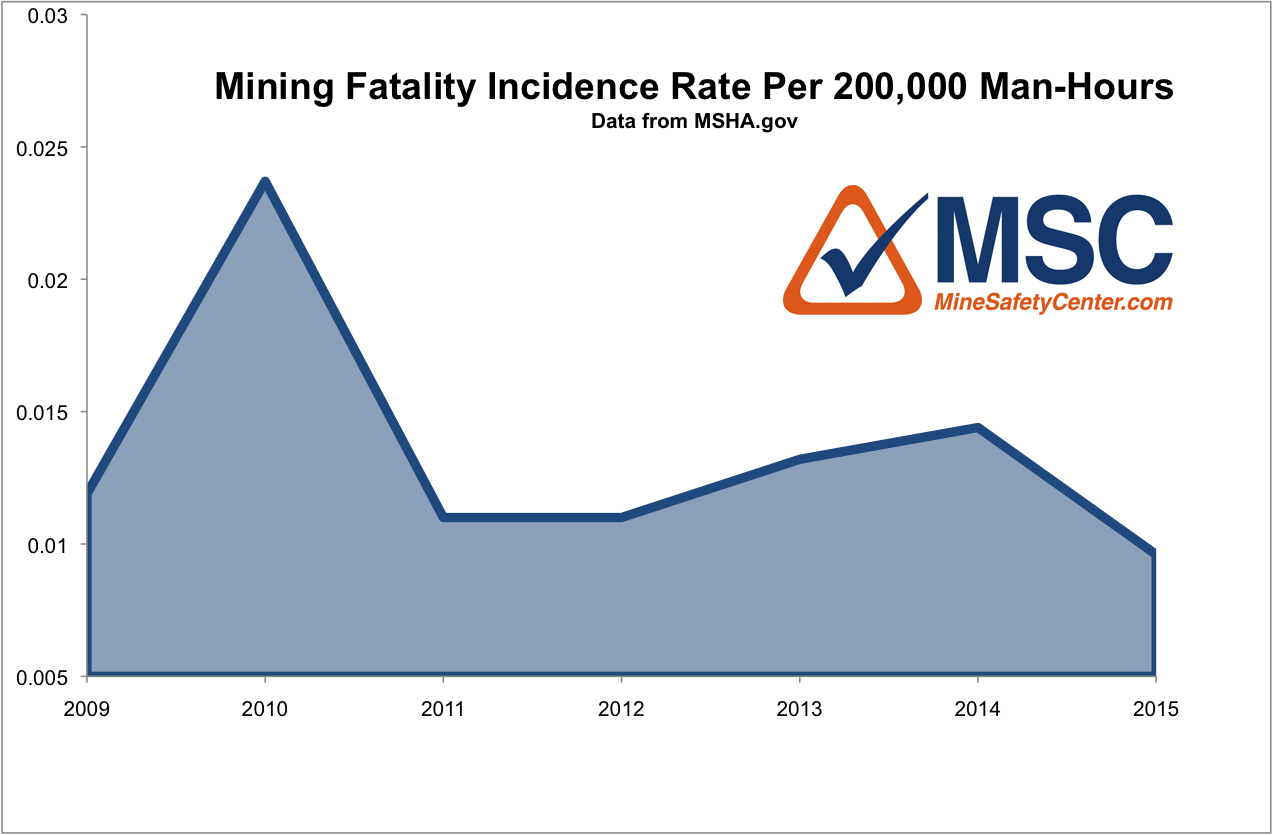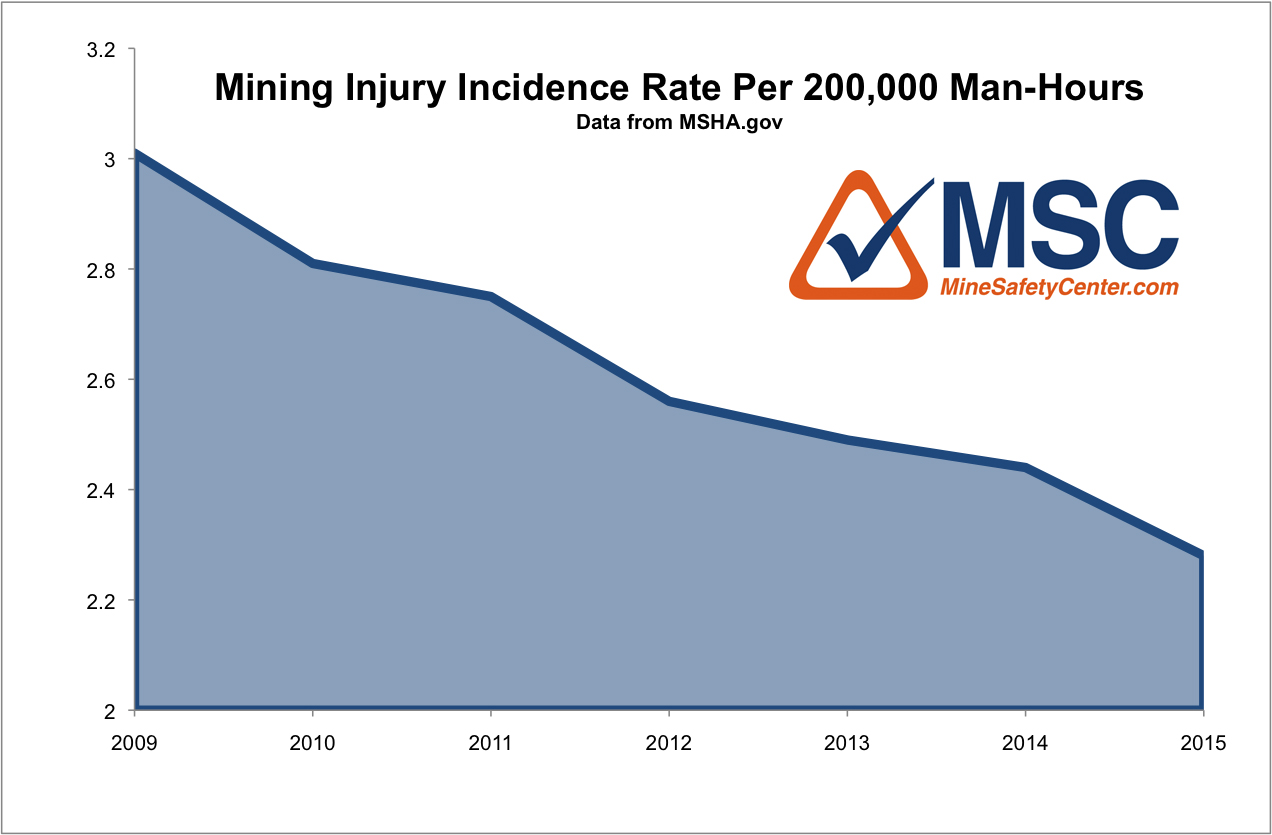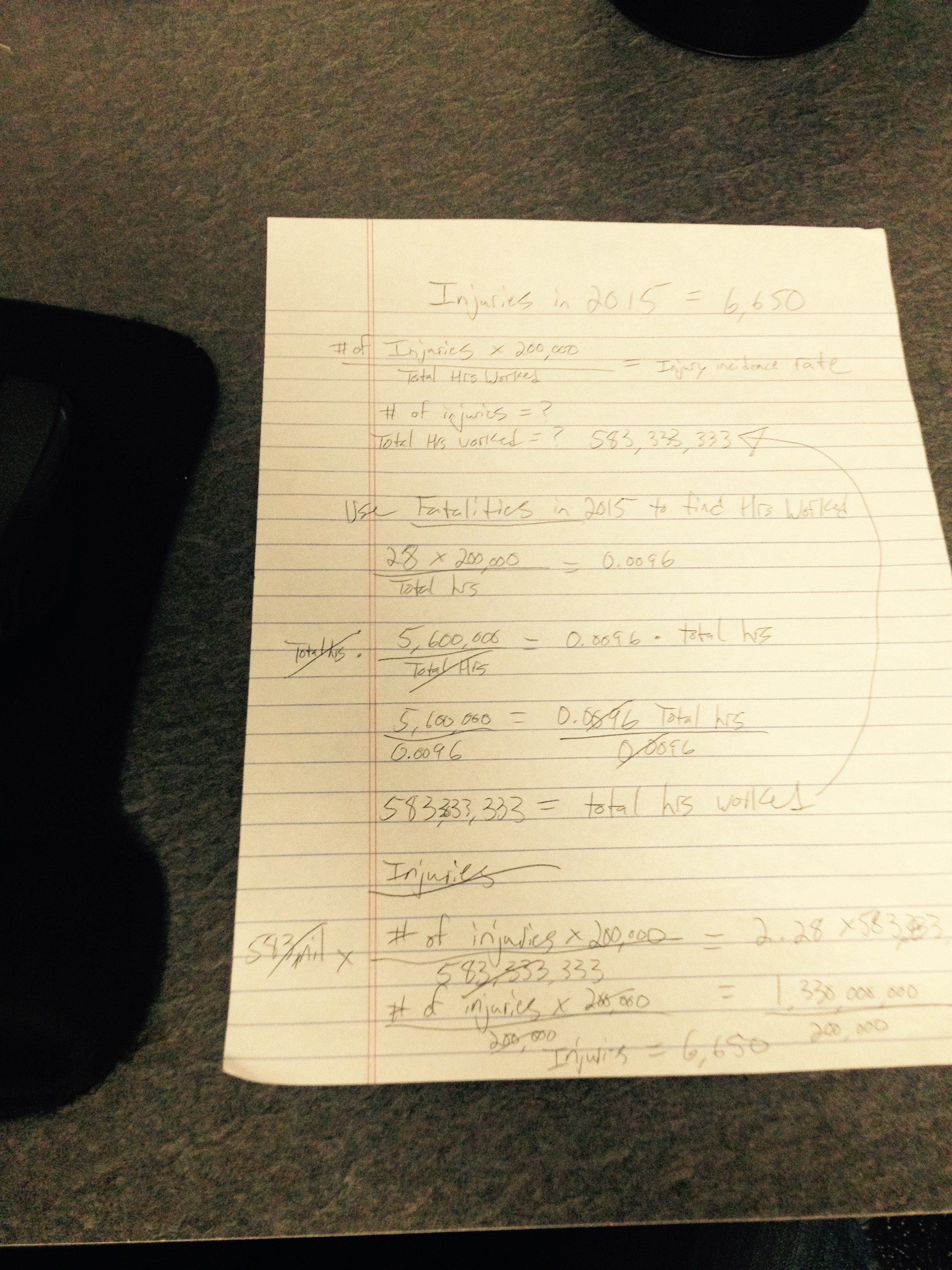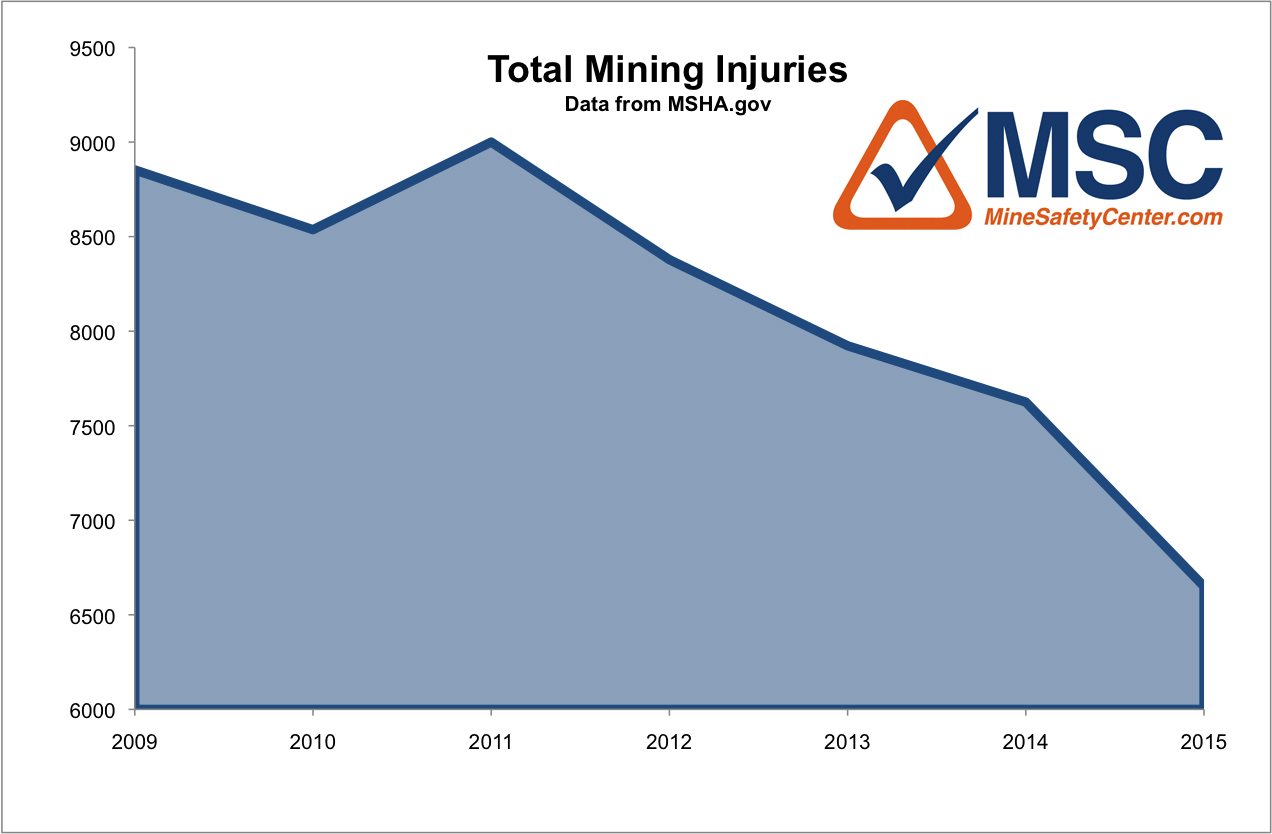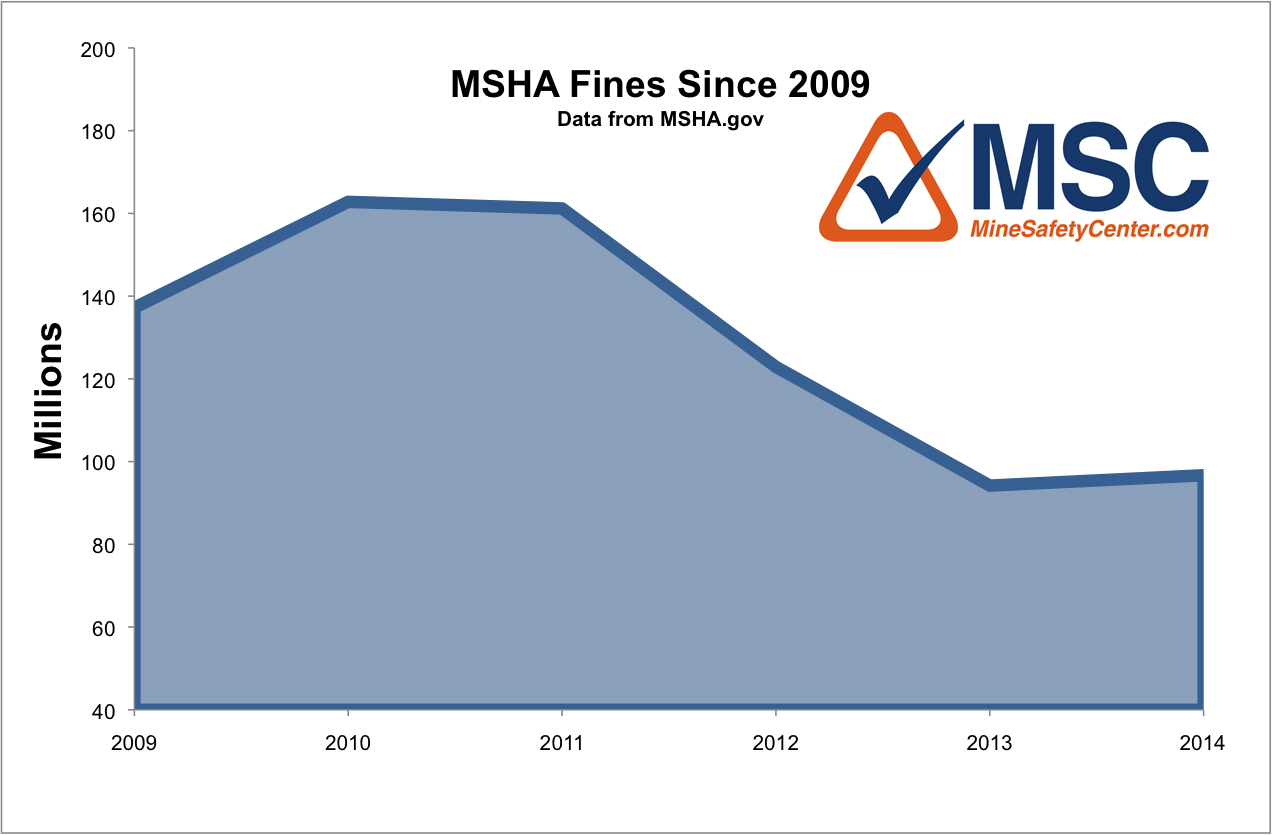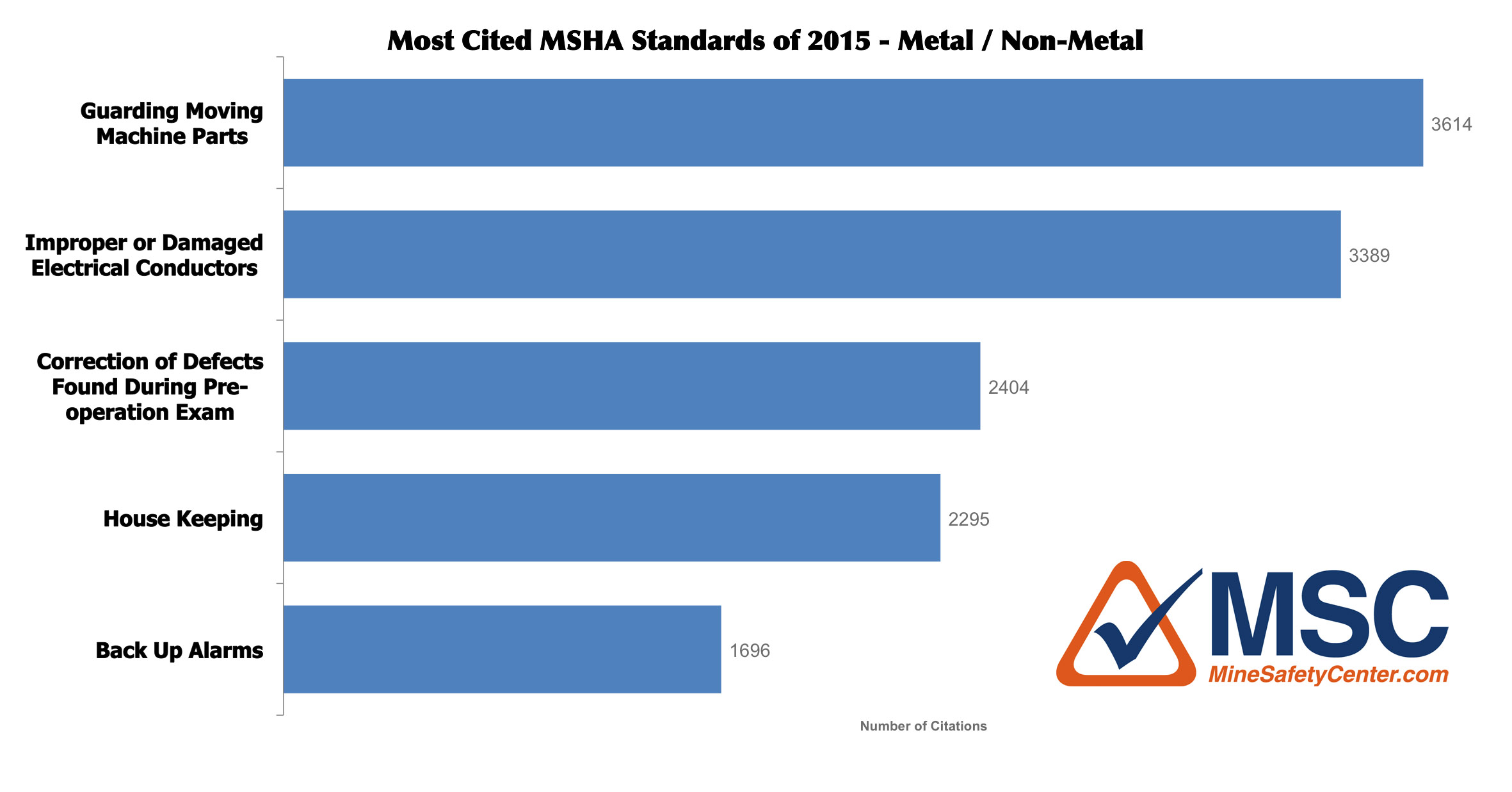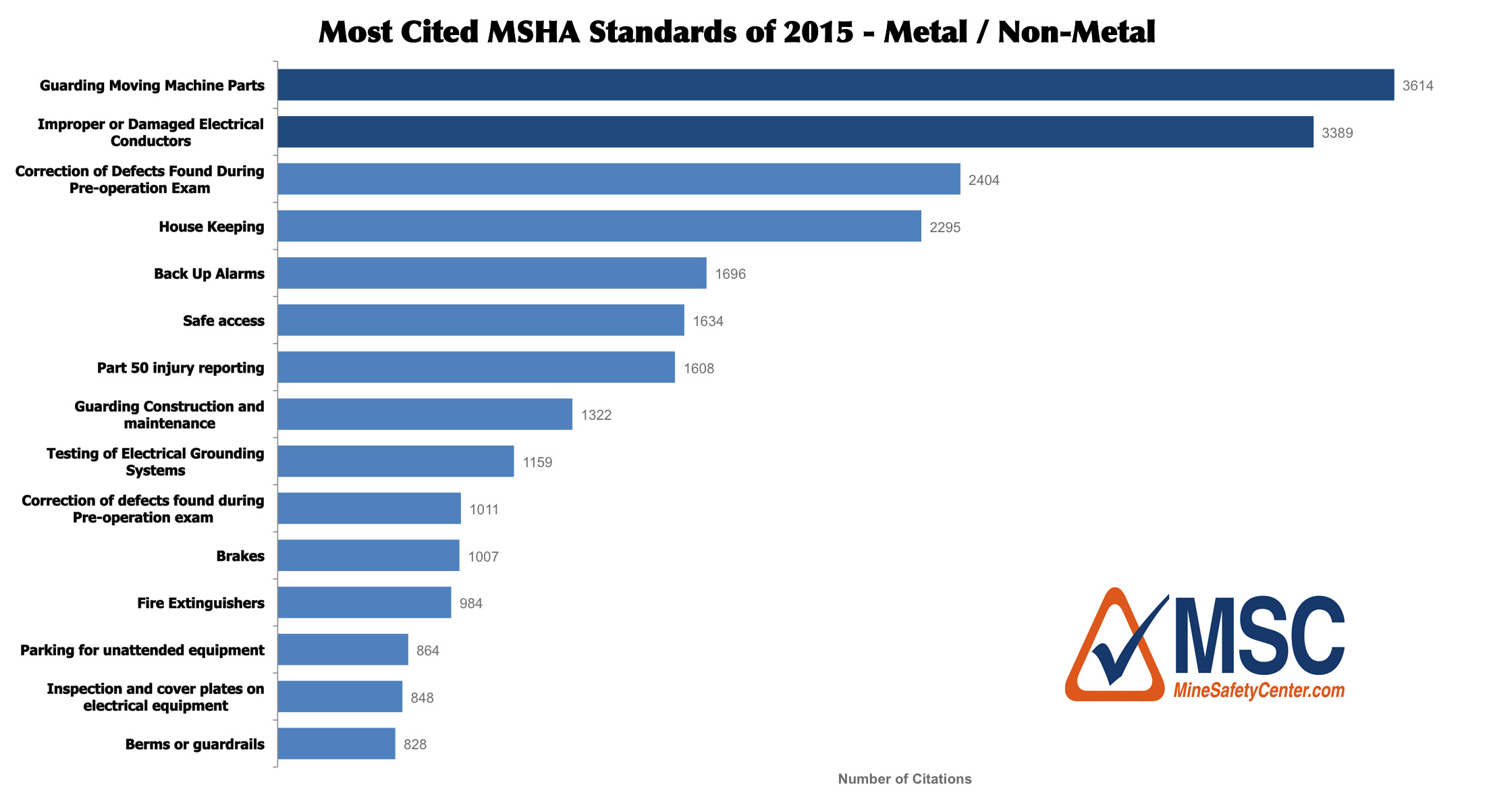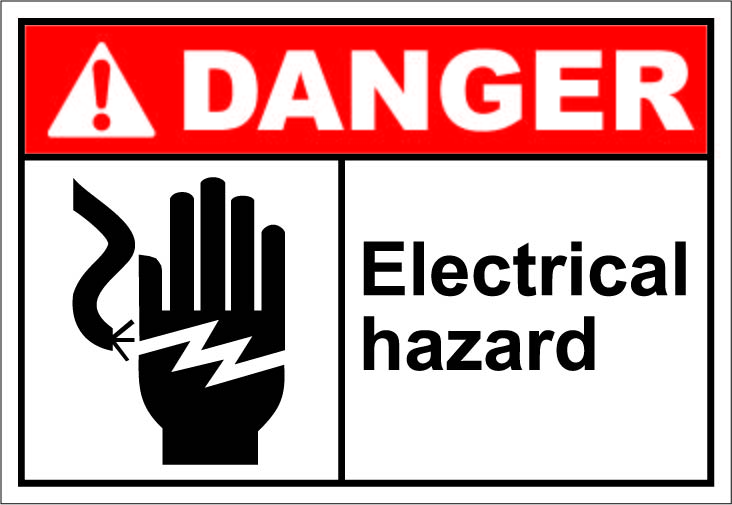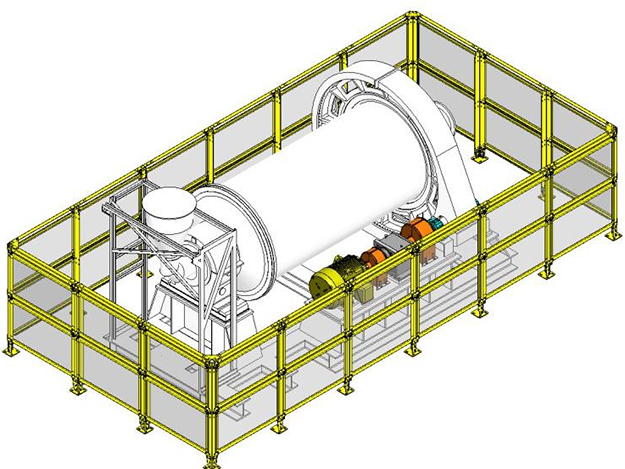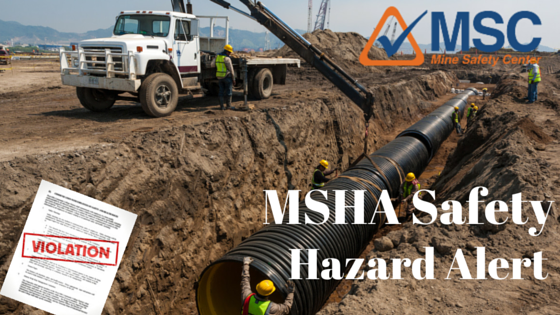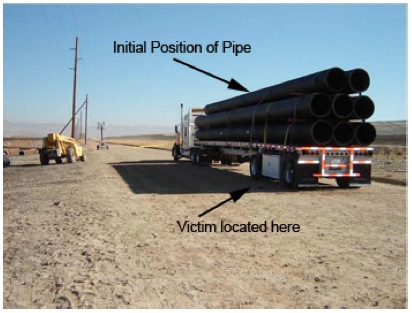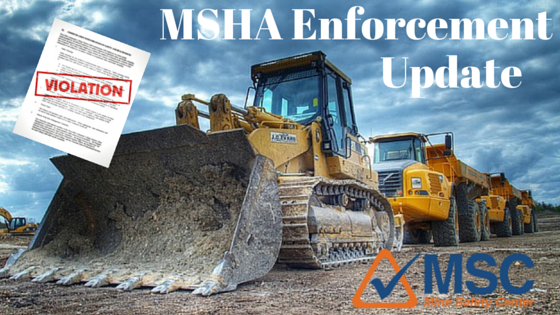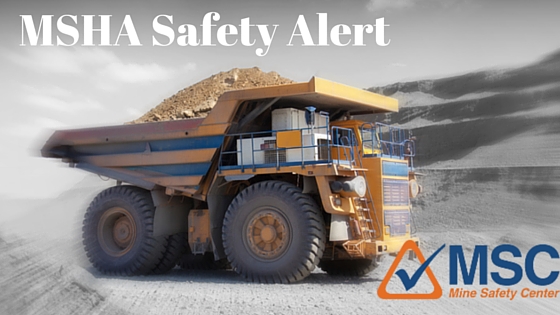
MSHA requires a “competent person” to deliver and sign all Part 46 training and paperwork. But that raises a lot of questions with very few clear answers. What exactly does “Competent Person” mean? Who decides if someone is competent and how? Does our competent person need to be MSHA approved? Does my MSHA competent person need to provide all of our training?
You’ll get an answer below to the most frequently asked Part 46 MSHA competent person questions. And if I don’t answer your question, let me know in the comments. I want this article to be as useful for you as possible.
What is the Definition of an MSHA Competent Person?
According to 30 CFR § 46.2 (d), MSHA’s Definition of a Competent Person is:
“A person designated by the production-operator or independent contractor who has the ability, training, knowledge, or experience to provide training to miners in his or her area of expertise. The competent person must be able both to effectively communicate the training subject to miners and to evaluate whether the training given to miners is effective.”
A bit vague, no? On top of that, there is a completely different (and more strict) set of rules for MSHA Part 48 trainers – more on that later.
Let’s get more specific.

Who decides if a person is qualified to be an MSHA competent person?
According to MSHA, a Competent Person must be “designated by the production-operator or independent contractor.” Essentially, management chooses who is a competent person.
What qualifications does a Part 46 MSHA competent person need in order to fulfill MSHA part 46 training requirements?
MSHA says “ability, training, knowledge, or experience to provide training.” Basically, do you know the job well enough to teach it to someone else. The competent person can also be overseeing a trainee taking an online MSHA course or watching a mine safety video
When is a competent person required?
A competent person is needed any time a company must complete Part 46 MSHA training. This includes New Miner Training, Annual Refresher Training and even Task and Site-Specific Training.
Does a Part 46 Competent Person need to be “MSHA Approved”?
No, Part 46 (§ 46.4(a)(2) to be exact) does not require MSHA review or approval of any competent person. This is extremely different from MSHA’s Part 48 trainer requirements.
How does a company officially designate a Competent Person?
Every company’s competent person must be listed in the cover letter of their Part 46 MSHA Safety Training Plan. There is no limit to the number of Competent People a company can list.
Does the Operator or Contractor Need to Explain the Rationale for Choosing an Individual as a “Competent Person” or Justify their Training Background?
No. Part 46 does not require companies to document the background of a competent person. Choosing a Competent Person is left at the company’s discretion.
MSHA may question companies “in cases where MSHA has reasonable concerns that an individual designated as a ‘competent person’ does not have the necessary expertise to instruct or to evaluate the effectiveness of the training.” But this is rare.
You know who’s qualified at your company. Just use your best judgment.
Does the same standard apply to Part 48 trainers?
No, the competent person standard only applies to Part 46. Part 48 training must be conducted and verified by a trainer with an MSHA Blue Card. A Blue Card trainer goes through extensive testing and must be approved by MSHA to receive their certification.
Only a Blue Card MSHA trainer can sign a Part 48 5000-23 form.
How do I know if I’m on a Part 46 or a Part 48 site? What’s the difference between Part 46 and Part 48?
This is one of our most asked questions.
In fact, we get this question so much that we created a tool to get you immediate answers. Just fill out a few simple questions on MSC’s free Part 46 or 48 tool and instantly get an expert’s answer.
What does the Competent Person need to cover during the MSHA training?
That depends on what type of Part 46 training they’re conducting. You can go here for detailed information on MSHA’s Part 46 training requirements.
Can a competent person who provides training to miners be credited with the training they provide?
Yes. A competent person can apply any training they instruct toward their own training certification requirements. It may feel weird filling out and then signing your on MSHA paperwork, but the practice is MSHA approved.
Can a contractor list their client, the mine operator, as a competent person?
Yes, in fact many times it’s required. Under § 46.4(b), you may arrange with a mine or independent organization to provide all or part of your training, including site-specific hazard awareness training. However, site-specific hazard awareness training must be conducted by an organization that has access to the site and is knowledgeable about the site-specific hazards at the mine.
Section 46.3(b) specifically provides that you must indicate in your training plan the organization and/or the competent person who will provide the training. If a mine is providing the site-specific, they must be listed on your training plan.
Does all of a company’s training need to be conducted by the same competent person?
No, and sometimes this won’t even be possible. Trainees can get instruction from any number of people as long as the trainer is qualified in the subject and listed as a competent person in the company’s Part 46 training plan.
Does a contractor’s MSHA Competent Person need to be on site when they’re working?
No. The employer must ensure that a competent person performs designated duties defined in 30 CFR § 46.2(b). The employer must also ensure that all employees are trained to recognize developing hazards. The competent person doesn’t need to oversee operations.
“Enhanced” MSHA Rules To Live By Enforcement Begins July 1st, Will Affect Both Operators and Contractors
In a press release distributed on June 26th, MSHA announced “Enhanced” enforcement of its MSHA Rules To Live By standards.
MSHA’s news release states:
On July 1, the U.S. Department of Labor’s Mine Safety and Health Administration will begin enhanced enforcement of “Rules to Live By,” its initiative of standards commonly cited following mine deaths, and nine underground coal mine exam rule standards focused on the greatest risks to miners in underground coal mines.
While 2015 was the safest year ever for mining in the US, it appears Joe Mains is determined for one final push during the last few months of his tenure.
In the announcement of this push, Joe Mains states:
We will more extensively employ our web-based calculators on Rules to Live By and the exam rule to determine the number of respective citations and orders issued during the most recently completed inspection periods for which data are available. Inspectors will provide mine operators with a copy of the results, encouraging them to use the tools to monitor their own compliance and take action to eliminate violations. The results will be added to criteria for consideration of impact inspections, particularly targeting mines with elevated noncompliance of these standards.
You know what that means…
Enforcement initiatives are nothing new with this administration. But there are signs that this might be especially far reaching with large numbers of coal inspectors potentially flooding the M/NM sector.
“Since the [MSHA Rules To Live By] programs began, MSHA has issued more than 45,000 “significant and substantial” citations and orders for violations of Rules to Live By standards. More than 15,000 citations and orders were issued for violations of exam rule standards since implementation of the rule. These represent violations MSHA has cited during mine inspections on critical, frequent hazards that cause or contribute to fatal mining accidents. Mine operators need to conduct site examinations to find and fix conditions and hazards if miners are to be better protected,” said Mains.
That number is bound to climb steeply in the coming weeks.
Prepare Your Operation and Contractors For “Enhanced” MSHA Rules To Live By Enforcement
Go over your operation with a fine-toothed comb, obviously with a heavy focus on the Rules To Live By Enforcement Standards. Here is a link to the MSHA Rules To Live By standards. And here is an MSHA document outlining what inspectors look for when focusing on Rules To Live By standards.
But you should also go through your paperwork. Make sure you have the fully completed New Miner training certificate for every employee. Make sure every employee is task trained for every job they conduct and tool they use to complete their work.
If you have any contractors working on site make sure they’re informed. I’d recommend doing an audit on their MSHA compliance yourself. That way if you find anything, they have time to correct the issue before MSHA shows up.
Dedicate significant time to this audit. A thorough self-inspection could save you a lot of time and money down the road.
And if MSHA does show up at your operation watch out for the tricky tactic I wrote about last week that some MSHA inspectors use to triple MSHA fines.
What Else Can You Do?
Forward this information to your colleagues. Everyone needs as much time as possible to audit their operations and get prepared.
Here is the entire press release:
MSHA launches enhanced Rules To Live By enforcement to encourage better examinations by industry’s operators
ARLINGTON, Va. – On July 1, the U.S. Department of Labor’s Mine Safety and Health Administration will begin enhanced enforcement of “Rules to Live By,” its initiative of standards commonly cited following mine deaths, and nine underground coal mine exam rule standards focused on the greatest risks to miners in underground coal mines. The agency announced these measures on May 12, 2016, at a mining industry stakeholder meeting in Arlington.
MSHA Inspector Actions and Transfers Are Cause For Industry Concern
I think you’ll agree when I say complying with MSHA regulations is harder than ever. Regulations seem to vary wildly from one inspector to the next. You never know what will happen when an MSHA inspector shows up.
MSHA seems determined to constantly push (and expand) the boundaries of federal regulations.
This week there were serious signs that MSHA will be stepping up their M/NM enforcement even further and is pushing for more jurisdiction – yet again.
MSHA Inspector Crosses The Line
Our expert, Kim Redding, reports that MSHA is attempting to claim jurisdiction over commercial sales yards, even if they don’t have any mining activity. MSHA has no precedent for claiming jurisdiction (more on that later) and has – to our knowledge – never previously attempted to regulate commercial sale yards.
This new development occurred while Kim was conducting an on-site audit for of his client mines in the Northwest. His client operates a Sand and Gravel pit with a connected sales yard where they both store material and load customer trucks.
Recently, an MSHA inspector showed up while the operation was closed. Normally this would cause the inspector to return when the mine was open for business. But not this one.
This MSHA inspector claimed that being open or closed is “a formality” (which it’s not) and began his inspection.
And when I say he began his inspection, that included the commercial sales yard that does not fall under his jurisdiction. This site has been in operation for years and never been inspected by MSHA.
He asked for everyone’s MSHA training certificates and other compliance documents. He inspected a Front End Loader that only worked on the sales yard filling customer trucks. I think you can guess, how that went….
On top of that, he forced the operator to TURN ON their processing plant and create product so he could inspect the shut down plant. This is the first time we’ve ever heard of this kind of an incident.
Here’s the thing:
There have been rumors that MSHA is angling for expansion of their jurisdiction to include recycling, concrete and asphalt plants. This week’s attempt appears to further those suspicions.
And the agency certainly has a well documented history of expanding their jurisdiction whenever they get an opportunity.
Why does MSHA want to expand their jurisdiction?
The 2nd incident this week may provide an explanation.
Coal has become a political punching bag in recent years.
It’s not just talk, though. Coal mines have been shuttered at a seriously concerning rate. Take a look at the stats from the past few years:
That’s almost 200 operations per year closing their doors. And coal mining man hours are lower than they were during the great recession.
How does that affect the rest of the industry?
With fewer coal operations occupying their time those coal inspectors will have nothing to do. And do you think MSHA is going to fire any coal inspectors?
Not a chance.
Especially when MSHA continues to hire new inspectors (even if the quality and training of MSHA inspectors was declared to be a widespread and growing problem by an independent DOL internal review).
When coal mines close, MSHA will send inspectors elsewhere; the M/NM sector.
And it may have already begun.
MSHA Inspector On The Move
A coal inspector from Kentucky conducted an inspection in Washington State this week.
On its face that may seem innocuous but as Jim Sharpe has pointed out in the past, even MSHA’s seemingly small actions can cause enormous, seismic shifts. Why?
This transfer shows MSHA has already started shifting their resources from coal to M/NM. This may very well be the beginning of coal inspectors flooding Metal and Aggregate mining operations across the country.
These two incidents could combine for serious trouble in the near future. MSHA could simultaneously expand their jurisdiction and flood the M/NM mining sector with more inspectors with just these two actions.
And don’t expect an adjustment period. MSHA’s past actions show they will expect immediate compliance if they are able to get jurisdiction over commercial sales yards, recycling, concrete and asphalt operations.
That means every Commercial Sales yard, Recycling, Concrete and Asphalt operation will need to immediately be MSHA compliant. If (and more likely when) the companies aren’t prepared – they’ll be subject to the same large fines that mine operators and contractors already experience.
Are you and your colleagues ready if that happens?
This jurisdiction incident needs clarification before the horses leave the barn. As we’ve seen in the past, once MSHA sets a precedent it will be too late to go back. Fortunately, these issues haven’t been brought to the courts yet so there is no precedent…. yet.
You Can Make A Difference In 1 Minute – What Can You Do?
Get the word out. Email colleagues. 
Share this article with colleagues on social media (using the buttons to the left).
You can contact any industry organizations where you’re a member. I know we’ll be speaking with our friends at CalCIMA and the Kentucky Crushed Stone Association to determine a course of action.
You can call MSHA themselves at 1-800-746-1553
Whatever you do, don’t let these incidents pass quietly. MSHA overreach and expansion is not inevitable. You can do your part.
Don’t Let Your Colleagues Get Blindsided By MSHA
Notes on the Q1 Quarterly MSHA Training Call
The Q1 Quarterly MSHA training call was held on April 27th, 2016 and contained quite a few bits of new information. Assistant Secretary of Labor for Mine Safety and Health, Joe Mains opened with an overview of 2015 and looking forward at 2016. Mr. Mains commented that the safest year ever in the U.S. for mine safety and health. He specifically pointed to the drop in silica and respirable dust levels every year since the black lung initiative began.
Mr. Mains also touted the new pattern of violations rules as a success. When MSHA established the new POV rules in 2010 there were 51 mines that were subject to POV status. In 2016 there was only 1 which didn’t even fully meet the criteria. (I would argue at least some of that drop was companies adjusting to the new rules, but I’ll get into my thoughts in a bit.)
MSHA Looking To Learn from 2015 Tactics
MSHA has “taken an aggressive all hands on deck approach” since August 3rd, 2015 when three miners tragically lost their lives in separate incidents, a first since 2002. Jeff Duncan, MSHA’s Director of Educational Policy and Development, went so far as to call it “aggressive actions on steroids” but was quick to point out the cooperation from industry associations and companies (More on that later).
MSHA officials declared that last year is the template and road map for the future. Coal will now take up best practices discovered on M/NM side. What might that look like?
MSHA Initiatives and Enforcement in 2016
During the call there were repeated statements that MSHA will continue and potentially increase their heightened presence at sites across the country. That includes “more boots on the ground and more focus on enforcement.” We will also see the increase in impact inspections continue.
MSHA indicated they plan to:
- Put more focus on outreach which officials say keeps safety awareness higher.
- Continue talking with industry, and encouraging industry officials focus on learning the lessons from recent serious injuries and fatalities. Especially focusing on an increased use of best practices in pre-op exams.”
- Release Safety Alerts monthly to “keep industry the focused on safety.”
- Conduct more walk and talks on coal side.
- Encourage companies to “look hard at conditions that have cost miner’s lives.” pre-shift examinations. Curb injuries with walk and talks.
Quarterly MSHA Training Call Signals Continued Enforcement
Over the past year MSHA has consistently extended an olive branch to industry associations and leaders. They are involving the mining industry in their safety initiatives through partnerships and meetings, more than ever before. That may be the carrot in MSHA’s carrot and stick approach.
But MSHA officials are also on site more than before. More walk and talks, inspections and meetings.
MSHA sounds convinced their increased involvement has been the crucial factor in improving mine safety. Maybe they’re right when you take the long view. Fatalities and injuries have trended steadily down since the Mine act was passed in 1977.
But they only have 6 months of data to back up their conclusions on these latest, drastic initiatives. It remains to be seen whether it’s a wise choice to base what sounds like an overhaul of the administration’s operating procedures with so little data.
I’m rooting for better industry and MSHA cooperation. The goal of both groups is a safe and productive work force. I’m still leery of Joe Mains’ history of overzealous citations and fines.
What does this mean for you? Get ready to see a lot of your friendly, neighborhood MSHA inspector and other officials this year. Focus on the safety basics and you should be fine.
Let’s just hope MSHA doesn’t turn it’s olive branch into a club over the next few months.
Sign up to get MSHA updates and tips like this sent right to your inbox. Don’t get blindsided by MSHA, stay informed.
You can find the quarterly MSHA training call notes on MSHA.gov. The call’s audio recording will be released later.
The Mining Industry In The U.S. Just Concluded Its Safest Year Ever
Preliminary statistics released by MSHA the afternoon of Thursday, April 7 show that 2015 was the safest year ever in the U.S. mining industry. This closely mirrors the fatality analysis I conducted earlier this year. Mining deaths are down across the board and have been trending that way for decades.
“In 2015, 28 miners died in mining accidents, down from 45 in 2014,” says Amy Louviere, MSHA’s media contact, in the press release.
But the announcement also released more granular data for 2015 than was previously available. This data allows an in depth analysis of the injury rate and total number of injuries. Ms. Louviere continued:
These rates are calculated based on hours of miners’ exposure, a relative measure taking into account recent employment changes in the mining market. The fatal injury rate, expressed as reported injuries per 200,000 hours worked, was the lowest in mining history for all mining at 0.0096.
Take a look at the progress on this key statistic over the last few years:
Mining Industry Injuries Down
But even more impressively, the mining injury incidence rate (again per 200,000 man-hours) dropped significantly. According to Ms. Louviere, “the all-injury rate – reported by mine operators – also dropped to a new low in 2015 at 2.28.”
Not only are less injuries leading to fatalities, there were also less injuries. Period.
Injuries and fatalities lowest ever in mining industry. Even when adjusted for man-hours worked.
Look at the trend over the last few years. This is outstanding progress:
The injury incidence rate is down 25% since 2009.
What does the injury rate translate to in actual numbers? After consulting this very cool incidence rate calculator (and brushing up on a little Algebra) I was able to figure out the total number of hours worked and injuries.
The mining industry combined for a total of 583.3 million man-hours in 2015. During that time, 6,650 total injuries occurred. Again, this number of injuries is a significant drop off. So while man-hours were down 7% from 2014 to 2015, the number of injuries dropped an impressive 13%.
Mining Industry Contractor Safety
Contractor fatalities were also down. In 2015, 8 contractors lost their lives compared to 12 in 2014. Obviously, a single loss of life is too many but a downward trend is great news. Unfortunately, MSHA doesn’t release the Total Injury Rate for Contractors.
The spike in overall fatalities and particularly contractors caused MSHA to declare a surge in the M/NM sector. These trends are promising but don’t look for MSHA to pull back their enforcement any time this year.
“The progress we made in 2015 is good news for miners and the mining industry. It is the result of intensive efforts by MSHA and its stakeholders that have led to mine site compliance improvements, a reduction of chronic violators, historic low levels of respirable coal dust and silica, and a record low number of mining deaths,” said Joe Main, assistant Secretary of Labor for Mine Safety and Health.
In other words, expect MSHA to continue their recent uptick in enforcement and inspections across the mining industry.
MSHA Fines Down
There is also another surprising piece of information in the article that could potentially be overlooked. The amount of MSHA fines is trending down. MSHA doesn’t count contested fines in these statistics which leads to artificially low numbers (MSHA reported $62.3 million collected for 2015, a giant drop from the $95 million average in 2013 and 2014.) So as cases wrap up, the total for 2015 will increase. But even if we throw out the artificially low 2015 numbers, the trend is still there. Even with this drop, MSHA inspectors still have a few tricks they like to try.
The most MSHA fines collected in a year occurred in 2010 with $162.8 million dollars. But since 2012, the trend has been decidedly downward.
This is good news for an industry that has had a very hard year. Safer mines and fewer fines? That’s something the mining industry and MSHA can both get behind.
Let’s work towards continuing both trends in 2016.
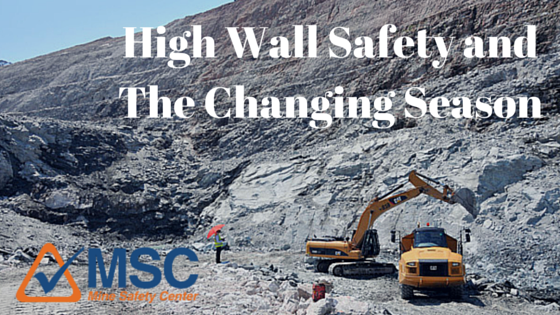
It may not feel like it where you are, but spring is right around the corner. Many operations are about to begin the preparations to start up operations after a long winter. But as the season changes from winter to spring, there may be a hidden danger lurking on your site. High walls become much more unstable and prone to collapse during the spring and fall. High wall safety in surface mining is an essential topic for everyone on a mine this time of year.
What is happening during the fall and spring causing the large increase in high wall and stockpile failures? There are four main causes according to mine safety expert, Kim Redding.
Added Weight
As snow melts and spring rains begin, huge amounts of moisture are added to the ground. This adds weight to the material making the gravitational pull greater and much more likely for the material to go to angle of repose in spectacular fashion.
Changing Temperatures
With spring comes rapidly changing temperatures. Moisture in the ground may go from ice to water and back to ice throughout the course of one day. As our science teachers would remind us, water expands 10% when it changes phases into ice. This expanding and contracting within the ground (and your high wall or stock piles) loosens material.
Erosion
As ice melts, the run off cuts away at materials and can very quickly take a high wall or stock pile from stable to failure. Flowing water is considered a lubricant for dirt and rock. You can see a great example of this at the Grand Canyon.

Hydraulic Pressure
When the ground is wet, gravity pulls water down to the water table. Water can cut and erode material as it travels making the ground more unstable.
If you work in an area with high concentrations of clay you need to be extra cautious. Clay may be one of the most dangerous materials we deal with in mining. Why? Clay can make a high wall stand much longer than all other materials. When a high wall with clay fails, it doesn’t come down in small slides like hard rock. Clay fails catastrophically.
How can you stay safe?
A thorough work place exam every day, at every task is an absolute necessity. Not only is a workplace exam required by law, it also gives you an opportunity to see any changing conditions of the high wall. Specifically look for cracking, sloughing and other indications that the material may fail. MSHA poster “Inspect the top and bottom of the high wall for cracking, spalling, sloughage, loose ground, and large rocks that could be hazardous.
If you do see these signs, tell your supervisor immediately. Ensure loose material is scaled prior to performing work. To safely scale using the shovel, maintain the high wall height within the reach of the bucket.
Do not work under loose material for any reason.
Pay special attention when working in the corners of box cuts.
Do not dig into the toe of a high wall.
Increase the number of benches at each high wall to catch falling material.
Use CB radios to keep equipment operators informed of high wall conditions.
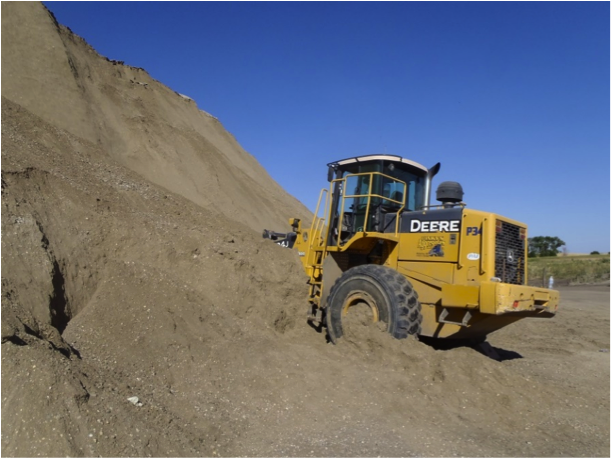
MSHA Rules To Live By – High Wall Safety In Surface Mining
There are also several applicable points from the MSHA Rules To Live By initiative.
- Never place yourself between a high-wall or stockpile and machinery. If a wall fails you will have a lesser chance of survival because if a machine is blocking your escape.
- Material only needs to come to the diaphragm for a person to suffocate.
- Always run machines facing the high wall. This allows you to watch for indications that the high wall is about to fail as you are completing your duties.
- Finally, never turn your back on the high wall. You need to be able to watch the wall at all times for increases in falling material that may indicate a failure.
Taking these simple steps and a little bit of time each shift can dramatically increase high wall safety in surface mining. Always be alert when you’re anywhere near a high wall or stock pile. It could be the difference between life and death.
Want more mine safety and compliance articles? Sign up for our free updates.
How To Avoid The 5 Most Cited MSHA Standards of 2015
Ever finish a Mine Safety and Health Administration (MSHA) inspection with your head spinning? You feel confident when the inspector arrives. Then the notepad comes out. Did the experience leave you with questions? Saying to yourself “How did we get hit for those MSHA standards? We run a good operation. How did we get so many fines?”
Obviously, MSHA citations are costly. But on top of the financial penalty, there are more subtle costs. Unlike money spent on training or workplace safety improvements that can prevent citations, MSHA fines aren’t tax deductible. MSHA citations also cost your company man-hours through additional inspections and time spent contesting the tickets. Finally, S&S citations affect your POV status, which can lead to even more fines if MSHA determines you have a Pattern of Violations.
Knowing where MSHA inspectors are looking, what they’re looking for and what they’re citing is valuable information. This information can give your team a path to go above and beyond your standard work safety and inspection procedures in targeted, high value areas.
That’s why I took a deep dive in the data provided on MSHA.gov. Let’s examine which Metal Non-Metal (M/NM) MSHA standards were cited most in 2015 and compare them to 2014. We can begin to see where MSHA is devoting their time and resources.
Spoiler: It doesn’t always match their many enforcement announcements. I know, you’re shocked.
The Most Cited M/NM MSHA Standards of 2015
MSHA citations at M/NM locations were essentially flat from 2014 to 2015. In 2014 there were 60,155 M/NM MSHA citations and 60,075 in 2015, a decrease of 0.01%. What were the top 5 most cited MSHA standards in 2015?
As you can see, Guarding and Damaged Electrical Conductors are far in front of the pack. That’s even more apparent when we look at the Top 15 standards in the next graph.
The 5 most cited MSHA Standards accounted for over 23% of all M/NM violations in 2015 and 22.8% in 2014. The 2 most cited MSHA standards accounted for 12% of all tickets written in 2015, more numbers 10 through 15 combined (11%). Focusing resources to improve your compliance is an efficient way to reduce your MSHA fine exposure.
How Do The Most Cited MSHA Standards of 2015 Compare to 2014?
There was only one change in the top 5 from 2014 to 2015. Part 50 injury reporting was replaced by house keeping in 2015. The number of Part 50 citations decreasing is an interesting development considering MSHA announced an increased emphasis on Part 50 reporting.
[infogram id=”msha_fines_2014_v_2015″ prefix=”yZk”]
How Can You Reduce Your Risk of Fines for These MSHA Standards? Let’s go through the standards one by one.
5. Back Up Alarms – MSHA standard 56.14132(a)
Manually operated horns or other audible warning devices provided on self-propelled mobile equipment as a safety feature shall be maintained in functional condition.
MSHA regulations require back up alarms are functional and must “be heard above the surrounding noise.” That phrase is very subjective and open to interpretation by the inspector. What one inspector would let go another may not. This is where most citations for this MSHA standard are written.
If a back up alarm isn’t operational, by law you can have a spotter as a substitute and still use that vehicle. But the spotter must be with the vehicle the whole time it’s in use. Not a very practical option and certainly not an efficient use of resources.
Back up alarms can cause complacency. We hear them all day long. It can become just another noise in the background. For example in 2004, 14 people were killed in Washington State backing accidents. The back up alarm was fully functional in every incident. The situation was so serious the state legislature passed an emergency law requiring all trucks dumping on construction sites to have spotters.
“The CDL test advocates that over the road trucks should try to minimize backing up, because of blind spots, and potential to hit something or someone,” said former MSHA inspector and Mine Health & Safety consultant Kim Redding. “The best practice to prevent backing incidents and citations is to set up your whole operation so there’s little or no need to back up. Obviously this is impractical or prohibitively expensive for some.”
He continued, “If this option isn’t available, make the danger of backing top of mind at your company. Backing is one of the largest causes of injuries and damaged equipment. Everyone on your site should know and understand they shouldn’t back up unless absolutely necessary.”
4. House Keeping – MSHA standard 56.20003(a)
Workplaces, passageways, storerooms, and service rooms shall be kept clean and orderly.
This is a very broad standard. You can get a ticket for a disorganized workshop, a messy vehicle cab, even a dirty microwave. Spilled materials are commonly cited under 56.20003(a). Any dust or silica build up can be seen as a trip hazard.
“When I was an MSHA inspector I saw poor housekeeping as a red flag,” said Kim Redding. “If you can’t do the simple things like cleaning up your work place, it’s more likely the big things won’t be done either.”
A clean work environment makes your company safer and more productive. Potential hazards easier for your company to spot and fix immediately when an area is clean and organized. As Jamie Ross of Mining Man puts it “don’t leave a trap for somebody else.” As you walk around your site, take a look for areas that could be tidied up.
Putting an emphasis on house keeping is a simple way to quickly make a site safer and more MSHA compliant. Employees don’t waste time looking for tools and equipment in an orderly shop.
3. Timely Correction of Defects Found in Pre-Operation Exam – MSHA standard 56.14100(b)
Defects on any equipment, machinery, and tools that affect workplace safety shall be corrected in a timely manner to prevent the creation of a hazard to persons.
Complying with 56.14100(b) should be straightforward but MSHA has a curveball. Even if you fix a defect you can still get a citation. How? As top mining attorney Mike Heenan said in a great interview with Pit & Quarry, “too often, operators only write down what the problem was, so you have a list of problems without a list of solutions. Maybe the operator has fixed those problems listed, but they might not write that down. You have to finish up the story in writing.” In this situation, some inspectors will write a citation, others may not. It’s up to your operation to take away the opportunity for a ticket.
2. Improper or Damaged Electrical Conductors – MSHA standard 56.12004
Electrical conductors shall be of a sufficient size and current-carrying capacity to ensure that a rise in temperature resulting from normal operations will not damage the insulating materials. Electrical conductors exposed to mechanical damage shall be protected.
A thorough workplace exam is essential to compliance with 56.12004. Many conductors are exposed to weather, impact, vibration, abrasion, and heat. Inspection of electrical conductors must always be a part of workplace examinations. Schedule inspections on a regular basis for areas of your operation that are less frequently traveled.
If anyone discovers a violation it must be dealt with right away. Many times a health and safety hazard can become part of the workplace if it’s noticed but left uncorrected. It’s human nature. That’s how hazards don’t get fixed and become violations.
1. Guarding Moving Machine Parts – MSHA standard 56.14107(a)
Moving machine parts shall be guarded to protect persons from contacting gears, sprockets, chains, drive, head, tail, and take-up pulleys, flywheels, couplings, shafts, fan blades, and similar moving parts that can cause injury.
Guarding is by far the most cited MSHA standard and it’s been that way every year for the past decade. Don’t expect that to change in 2016, especially since the first fatality this year was a person killed when they got caught in a conveyor.
There is a clear history of inconsistent enforcement of MSHA regulations. Guarding is particularly hit or miss because the standard is extremely subjective. One inspector may cite you for an area that another inspector has approved for years.
In his interview with Pit & Quarry, Mike Heenan remarked, “It’s amazing to me in all these years that machine guards continue to be up there with other violations. It’s been my contention for a long time that MSHA should spend less time finding citations and instead finding more important things in Rules to Live By.”
“Many times I’ll tell operators their guarding isn’t MSHA compliant,” Kim explains “and they say ‘There’s no way, these are factory guards!’ Just because the guards came from the factory doesn’t mean they’re MSHA compliant. The factory builds on spec. If you don’t specify you want something guarded, they won’t do it. They’re a business that needs to keep their margins up just like you. On top of that, MSHA won’t cite the manufacturer for the violation. It’s your job as a mine operator to request MSHA compliant guarding.”
The best way to protect workers and reduce your risk of citations is to guard all moving machine parts. That includes bolt heads, key ways, couplers, everything. Box in every moving part, everything, so no one can touch, get near a moving part or in a restricted area. MSHA inspectors can and will contort their bodies to show there is a “possibility” someone could be injured.
In the most basic terms, the potential for an MSHA citation exists if an adult sized toddler could touch anything dangerous.
Key Takeaways – Health and Safety at Work
There is a definite trend in the most cited MSHA standards. Nearly all of the rules are open to interpretation. Every MSHA inspector is different and you may have 2 inspectors interpret the rules in completely different ways. You can either leave it to the luck of the draw or be proactive and engineer your operation so there’s no opportunity for an inspector to cite you. But you have to make that decision for yourself and your company.
Because they’re cited so much more often, you can get the most return on your investment by aggressively focusing your compliance efforts on the top 5 MSHA standards above.
Sign up for more MSHA tips and updates.
MSHA Safety Hazard Alert
Late yesterday afternoon Neal Merrifield distributed yet another MSHA Safety Hazard Alert. He begins:
Since 2008, six persons have died at metal and nonmetal mines in accidents involving large diameter plastic pipe. Two delivery truck drivers were killed while their flatbed trucks were being unloaded at the mine. In both cases, an unsecured section of pipe rolled from atop the truck’s load of pipe, fell and struck the driver as he stood nearby. Two pipe crew supervisors, one a contractor, died while connecting sections of pipe using excavators and lifting straps to support and position the pipes. One died when the pipe slipped out of the strap and struck him; the other was killed when the pipe sprung out of the positioning cradle and struck him. A pipe foreman and a contract laborer were killed when they were struck or crushed by the pipe while assisting excavators re-position long sections of pipe using lifting straps.
Again, MSHA mentions their increased use of walk and talks, however this time without a veiled threat:
MSHA plans again this month to continue walk and talks at mine sites and enlist the assistance of mines, miners and mining industry groups in the effort to raise safety consciousness, stay safety-vigilant 24/7 and send miners home every day at the end of their shift.
That’s a sentiment we can all get behind. Though there were too many tragic deaths last year, 2015 was overall the safest year ever for the mining industry.
The alert also included some practical information.
MSHA standards require that materials not be stacked in a manner that creates a fall-of-material hazard, that taglines be attached to loads that may require guidance or steadying while suspended, and that hitches and that slings used to hoist materials be suitable for the particular material handled.
Our Recommended Best Practices – Lifting and Handling Plastic Pipes
Here are some best practices for lifting large objects of any kind with a few specific to plastic pipes:
- Task train all persons prior to performing work.
- Secure loads on trucks, forklifts and cranes.
- Establish and discuss safe procedures before beginning work. Identify and control all hazards with the work to be performed along with the methods to properly protect persons.
- Ground personnel should be highly visible. Unauthorized persons should be kept clear of the area. Examine work areas during the shift for hazards that may be created as a result of the work being performed.
- Verify slings are in good condition and securely attached before beginning a lift.
- Stand clear of items of massive weights having the potential of becoming off-balanced while being loaded or unloaded.
- Use taglines of sufficient length to adequately protect persons.
- Keep pipes as straight as feasible to avoid any spring-like motion.
- Evaluate the stability of the material before unfastening a load. Pay particular attention to loads that may have shifted or become unstable during transport.
- To prevent pipes from falling when the load is unfastened, secondary supports (such as side stakes) may need to be installed before the load.
- Unload materials on level ground and in a safe, controlled manner.
- Monitor personnel routinely to determine that safe work procedures are followed.
For more detailed information you can consult this post from North American Pipe Co.
A number of MSHA safety hazard alerts have been issued to open 2016. Now is the perfect time to conduct a thorough examination of your operation and equipment. Ensure everything is MSHA compliant and in working order before operations ramp up in the spring.
Never miss an MSHA enforcement initiative again. Sign up to have MSHA and industry updates sent right to your inbox.
MSHA Safety Enforcement Alert Announces Vague Initiative
After last week’s serious incident, today brings another MSHA safety enforcement announcement and boy is it broad. MSHA’s M/NM Administrator Neal Merrifield begins the announcement:
Since 2011, 16 metal and nonmetal miners have died in accidents involving machinery and non-haulage mobile and quarry equipment, and many more have been seriously injured or disabled. Of the 16 persons fatally injured, six were supervisors and three were contractors. Seven miners died when they were struck by the equipment they or a co-worker were operating, four miners drowned when their equipment ran into or overturned into water, and five more died when they were caught in crushers, on drill steel or between reciprocating machinery. The equipment involved represented a wide variety of mining equipment: drills, dozers, excavators, graders, dredges and crushers… MSHA plans again this month to continue walk and talks at mine sites and again enlist the partnership of mines, miners and mining industry groups in the effort to raise safety consciousness.
I’ll repeat that, “drills, dozers, excavators, graders, dredges, and crushers.” MSHA is essentially announcing close inspections of all machinery and equipment used in the process of mining. Their stated purpose is admirable as always, but you have to consider MSHA’s previous methods of “raising awareness.” Recent history tells us it will likely involve increased inspections, citations, and fines.
This is the 5th announcement of increased MSHA safety enforcement in just the past few months. MSHA has announced an enforcement “surge” on M/NM mines which includes transferring inspectors from coal to M/NM, an emphasis on confined spaces and Lock Out, Tag Out, Try Out procedures, and Part 50 injury reporting. They have also been given funding to hire more MSHA inspectors.
Merrifield goes on to offer some best practices:
MSHA standards require operators to maintain control of mobile equipment while it is in motion, and to operate at speeds consistent with conditions of mine roadways, tracks, grades, clearance, visibility and traffic. When mobile equipment is not in motion, it must be stopped in a safe location and when not attended, parked in a manner that prevents it from moving and becoming a hazard to the operator or other miners. In addition, mine supervisors and equipment operators need to continuously monitor and maintain roadways and berms and operate mobile equipment in a controlled, safe manner. When operating excavators, position the as far from the water’s edge as feasible on firm, stable ground. Don’t traverse unstable ground above a highwall and stay off and away from over-steepened stockpiles until they can be made safe.
You can download today’s Machinery and Equipment Hazards Alert here.
Considering the number of recent MSHA safety enforcement alerts, 2016 is going to be a very busy year for mine managers, safety professionals, and mine contractors. Prepare your company for MSHA compliance in 2016. MSC expert and Ex-MSHA inspector, Kim Redding, has a free MSHA compliance video series. Learn MSHA tips from a former MSHA inspector.
MSHA Safety Alert – Haul Truck Incident and Best Practices
This morning brought another MSHA safety alert involving a serious accident. The incident happened at a Surface Limestone operation where “a miner was operating an empty articulating haul truck. The driver lost control on a downhill grade and overturned. He was hospitalized with serious injuries but survived, likely because he was wearing his seat belt.” The injured driver will be in our thoughts today.
MSHA’s best practices to prevent future haul truck injuries include:
- Always wear a seat belt when operating mobile equipment.
- Task train mobile equipment operators adequately and ensure each operator can demonstrate proficiency in all phases of mobile equipment operation before performing work.
- Conduct adequate pre-operational checks and correct any defects affecting safety in a timely manner prior to operating mobile equipment.
- Maintain control of self-propelled mobile equipment while it is in motion.
- Post safe speed limits for the mine roads and remind mobile equipment operators to reduce speed when weather conditions change.
You can download the alert pdf here.
MSHA has been very active recently. In just the past few months they have announced an enforcement “surge” on M/NM mines, an emphasis on confined spaces and Lock Out, Tag Out, Try Out procedures, and Part 50 injury reporting. MSHA safety alerts have also been issued with increasing regularity. 2016 is shaping up to be a busy year.
The best practices in today’s MSHA safety alert don’t just apply to haul trucks. Customers and contractors driving on mines must also be made aware of mine safety best practices. This can be done during the initial Site Specific Hazard Awareness training. However, making contractor safety training a consistent routine will improve safety for everyone on the mine. When a company resubmits their MSHA training paperwork is a convenient time for this training, but more often is always better.
If you need resources for this training, you can go to CalCIMA’s website for free driver safety training materials. You can also use this free truck safety training video produced by MSC and CalCIMA.


